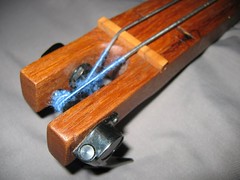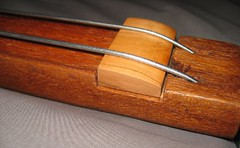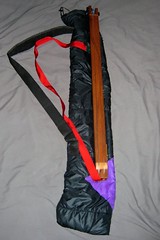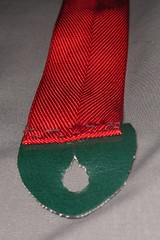
Carl Thompson (Nacido en 1939) es un luthier especializado en la construcción de bajos eléctricos personalizados de alta calidad, su fábrica se encuentra en Brooklyn, New York. Nació en Pitcairn, Pennsylvania de una familia con larga trayectoria musical, se mudó a la Ciudad de Nueva York en 1967, con el fin de seguir una carrera como un guitarrista de jazz. Después de que trabajar en una tienda de guitarras para suplementar sus ingresos, él empezó su propio negocio de reparación de guitarras. Hizo su primer instrumento en 1974 y rápidamente obtuvo renombre en el arte de la construcción de instrumentos musicales. Algunos trabajos excepcionales hechos por Carl Thompson son el flautín bajo (bass-piccolo), que es un bajo eléctrico de las mismas dimensiones de un bajo normal pero afinado una octava más alta, y cinco contrabajos de seis cuerdas. Carl es atribuido con crear el primer flautín bajo eléctrico (encargado por Stanley Clarke) y el primer bajo eléctrico de seis cuerdas (encargado por Anthony Jackson) así como el primer bajo fretless de seis cuerdas (encargado por Les Claypool). El bajo fretless de seis cuerdas de Les Claypool, el "Rainbow Bass" (Bajo Arcoiris) está hecho de bandas de madera diferentes, y es una de sus marcas registradas. Aparte del Bajo Arcoiris , Claypool posee otras seis creaciones de Carl Thompson. Los bajos carl Thompson son muy buscados y él mantiene una lista de espera de dos años, aunque algunas órdenes pueden tomar hasta tres años para completarse. El costo para un bajo básico de cuatro cuerdas hecho por Thompson está acerca de los $4.000. Bajos como el "Rainbow Bass" pueden costar más de $10.000 aunque Carl no hace copias de sus trabajos anteriores para sus clientes a pesar de que en ocasiones pasadas fueron pedidos hacer así, él mantiene que todos sus bajos son como "uno de una clase". En la actualidad continúa como músico activo, practicando las varias horas al día, y tocando una vez a la semana en un restaurante local de Brooklyn. Tiene una fascinación con cantantes de jazz, y es un entrenador vocal respetado de jóvenes cantantes, utilizando su impresionante colección sin precedentes de grabaciones viejas para hacer un punto con un joven cantante, visitando el pasado para que la maestría musical increíble del siglo XX pueda ser dada a generaciones futuras.

Link a la pagina Carl Thompson
http://www.ctbasses.com/























